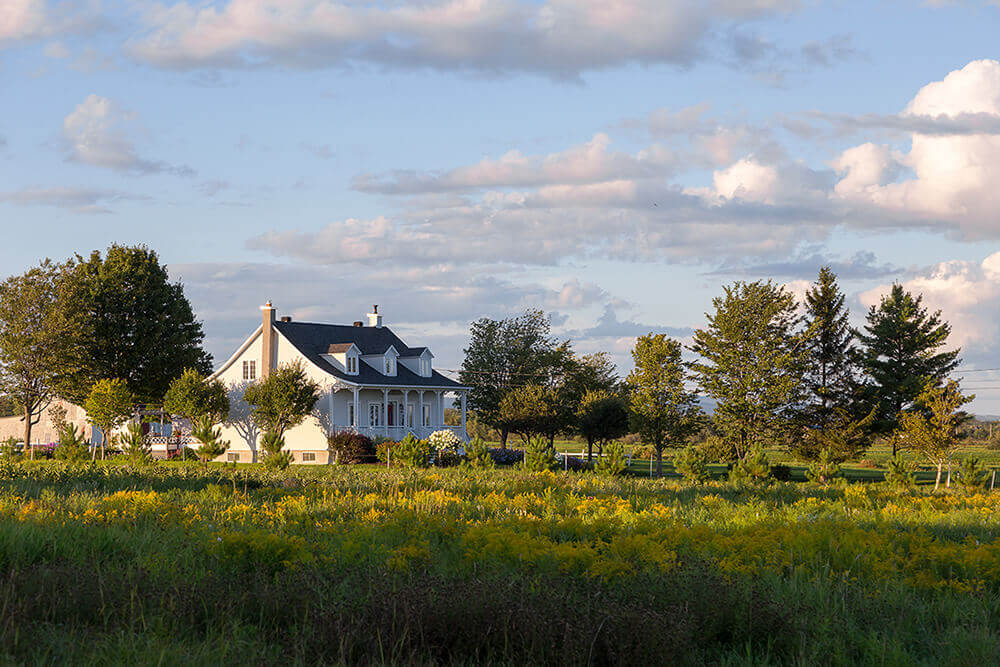What is the USDA Eligibility Map?
The USDA Eligibility Map is available online and lets you check whether a specific property qualifies as USDA eligible. You can enter an address or explore by zip code. If the location falls within an eligible rural area, it may qualify for a USDA loan.
The USDA defines rural areas in several ways:
- Towns with populations of 10,000 or less
- Areas with 10,001 to 20,000 people that are not part of a major metro area
- Communities up to 35,000 people that retain rural character and are considered underserved by mortgage lenders
This means many small towns and even some outer suburbs may qualify.
USDA property eligibility requirements
To qualify for a USDA loan, the property must:
- Be in a USDA-eligible area
- Be used as your primary residence
- Be a modest, single-family home
- Meet USDA safety, structural, and livability standards
Vacation homes, income properties, and large estates do not qualify.
USDA income limits and requirements
In addition to property location, borrowers must meet income requirements. The USDA sets income limits that vary based on location and household size.
For example, in many standard-cost counties, the income limit is:
- $119,850 for 1–4 person households
- $158,250 for 5–8 person households
You can use the USDA income tool to determine your eligibility based on your household size and location.
Credit score requirements
The USDA does not require a specific minimum credit score, but most lenders prefer a credit score of 640 or higher for automated approval. Borrowers with lower scores may still qualify through manual underwriting, especially if they show strong financial stability in other areas.
Debt-to-income ratio (DTI)
Your debt-to-income ratio also plays a role. While the USDA doesn’t set a hard cap, lenders typically look for a DTI of 43% or lower. Borrowers with higher ratios may need stronger credit scores or compensating factors like savings or stable employment.
USDA loan benefits
USDA home loans offer several key benefits:
- No down payment required
- Competitive fixed interest rates
- Lower upfront and annual fees than conventional mortgage insurance
- Flexible credit score requirements
Instead of mortgage insurance, USDA loans include:
- A 1% upfront guarantee fee
- A 0.35% annual fee, based on the remaining loan balance
These fees help keep the program self-sustaining while still being affordable for borrowers.
Are there loan limits?
Unlike some other loan types, USDA Guaranteed Loans do not have a set nationwide loan limit. However, most lenders follow standard limits:
- Around $419,300 in typical counties
- Up to $970,800 in high-cost areas
Check with your lender to understand local limits based on your area.
How to use the map
To use the USDA Eligibility Map, visit the official USDA site and enter the property address. You’ll get instant results showing whether the location falls in an eligible rural area. Because eligibility areas may change from year to year, it’s a good idea to verify every time you search.
Final thoughts
The USDA Property Eligibility Map is a powerful tool for buyers interested in home loans for rural areas. With no down payment, flexible income requirements, and favorable credit score requirements, the USDA loan program makes homeownership more accessible. Check the map, explore your options, and talk to a loan expert to see if a USDA loan is right for you.
CrossCountry Mortgage, LLC is not affiliated with or acting on behalf of or at the direction of any government agency. If applying for a USDA loan, subject property and borrower income and credit must qualify to USDA guidelines.


